Making your own almond milk – Is it worthwhile? If saving money is the chief motivator then it’s a pretty clear cut answer: no. Even with the lowest possible price for almonds in our area (on sale for $4.99/lb at Sprouts), homemade almond milk ended up costing 250% more than the cheapest store-bought option. However, there are many other reasons one might want to DIY it.
[easy-pricing-table id=”4736″]
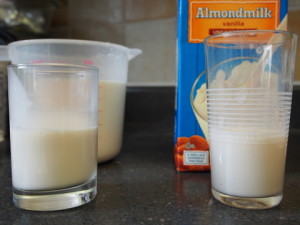 But first off – is it even a comparable product? Does homemade stand up to store-bought? In my opinion, yes. As a cold beverage the homemade almond milk was delightful and nearly identical to store-bought.
But first off – is it even a comparable product? Does homemade stand up to store-bought? In my opinion, yes. As a cold beverage the homemade almond milk was delightful and nearly identical to store-bought.
I use almond milk in coffee and tea though, and the heated up DIY version had a lot more texture than store-bought – not gritty or crunchy or thick really, but just bulky. It didn’t ruin the heated drink, but it was different than store-bought’s silky smoothness.
Additives, Emulsifiers, and Stabilizers
After a ni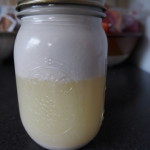 ght in the refrigerator, the DIY almond milk separated. It was easy enough to shake the jar and get it back to rights, but it does show it’s homemade-ness after a while. Of course store-bought almond milk relies on emulsifiers to keep all the particles suspended, and processing to ensure uniformity. Many people might be interested in DIY-ing almond milk to avoid the additives and emulsifiers that come with store-bought. A letter published in Nature recently suggested that commonly used emulsifiers (carrageenan, lecithin, polysorbate-80, polyglycerols, and xanthan gum, among others) make the gut more vulnerable to conditions like colitis, IBS, and metabolic syndrome. Read more about The Food Additive that Might be Making You Sick.
ght in the refrigerator, the DIY almond milk separated. It was easy enough to shake the jar and get it back to rights, but it does show it’s homemade-ness after a while. Of course store-bought almond milk relies on emulsifiers to keep all the particles suspended, and processing to ensure uniformity. Many people might be interested in DIY-ing almond milk to avoid the additives and emulsifiers that come with store-bought. A letter published in Nature recently suggested that commonly used emulsifiers (carrageenan, lecithin, polysorbate-80, polyglycerols, and xanthan gum, among others) make the gut more vulnerable to conditions like colitis, IBS, and metabolic syndrome. Read more about The Food Additive that Might be Making You Sick.
Another difference could be in shelf-life. I didn’t keep my DIY milk long enough to test this, but various sources suggest it has only a 4 day life in the fridge. That’s a lot different than the clearly-printed and weeks-from-now date printed on a carton of store-bought. With the price tag of homemade, you’d hate to have a batch go bad on you. Since the process is fairly simple, it is something a dedicated DIYer could and would have to do often rather than in bulk. In other words, make a few small batches throughout the week rather than one big batch once in a while.
For more data and comparison check out Simmer and Boil’s What You Need to Know About Almond Milk. It lists pros and cons, and compares almond milk to whole almonds and to regular (cow’s) milk.
EWG Food Scores
Though I was first curious about the cost of DIY almond milk, seeing the article about emulsifiers got me thinking more critically about what I was buying/drinking. When I looked up almond milk in the EWG Food Scores database I found that most almond milks score around 5 (out of 10). The Environmental Working Group (EWG) ranks all manner of foods by nutrition, ingredient, and processing concerns. The EWG’s best rated almond milk is made by Pacific Foods (EWG Score: 1.6, 10 cents per ounce). 5/10 is not an alarming score, and EWG lists no outright reasons to favor DIY over store-bought, even in the 5/10 category for this product.
Environmental Impact – Packaging & Recycling, Transport & Growing
Once I started questioning my weekly almond milk purchase, I bumped up against the environmental impact of store-bought. It was really really bothering me to throw away those cardboard milk cartons. Some facilities recycle the containers, and others don’t – unfortunately mine falls into the “don’t/won’t” category. You can call your local recycler to see if they have that capability, as suggested by The Sierra Club’s Mr Green. And/or delve further into the question of packaging’s environmental impact over at Treehugger: Which Milk Container has the Lowest Carbon Emissions.
 Keeping DIY almond milk in a glass jar in the fridge avoids the cost of shipping the almond milk to the store, and the cost of downcycling the container. If we take a wider angle though, the cost of growing and shipping almonds all over the country comes into question – and THAT is a pickle. Almonds have been caught up in the California drought crisis conversation (How Almonds Became a Scapegoat for California’s Drought), as covered by NPR’s The Salt (which references the original Slate and Mother Jones pieces that brought attention). It makes me more than a little sick to think I’ve contributed to this problem: “[almond milk production] has exploded in the past decade. It’s a $4.8 billion dollar market. And that’s encouraged farmers to rip out annual crops like tomatoes and melons in favor of orchards. But unlike annual crops, a farmer can’t fallow an orchard.”
Keeping DIY almond milk in a glass jar in the fridge avoids the cost of shipping the almond milk to the store, and the cost of downcycling the container. If we take a wider angle though, the cost of growing and shipping almonds all over the country comes into question – and THAT is a pickle. Almonds have been caught up in the California drought crisis conversation (How Almonds Became a Scapegoat for California’s Drought), as covered by NPR’s The Salt (which references the original Slate and Mother Jones pieces that brought attention). It makes me more than a little sick to think I’ve contributed to this problem: “[almond milk production] has exploded in the past decade. It’s a $4.8 billion dollar market. And that’s encouraged farmers to rip out annual crops like tomatoes and melons in favor of orchards. But unlike annual crops, a farmer can’t fallow an orchard.”
Waste By-Product
Making almond milk results in lots of leftover “nutmeat.” I put it in the compost bin, but any one making their own almond milk on a regular basis would have a lot of organic material to address. (I wonder what big-time almond milk manufacturers do with the stuff?) One Green Planet suggests that the remaining nutmeat could be used as almond flour (once dried) – that would be a boon and a two-fer for bakers living gluten-free and interested in making their own almond milk. The price of almond meal/flour isn’t insignificant and if you factor that into the cents per ounce of the homemade milk it might make DIY cost-effective.
one making their own almond milk on a regular basis would have a lot of organic material to address. (I wonder what big-time almond milk manufacturers do with the stuff?) One Green Planet suggests that the remaining nutmeat could be used as almond flour (once dried) – that would be a boon and a two-fer for bakers living gluten-free and interested in making their own almond milk. The price of almond meal/flour isn’t insignificant and if you factor that into the cents per ounce of the homemade milk it might make DIY cost-effective.
You Might Wonder…
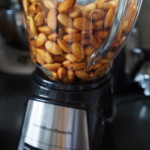 Can it be done with a very crappy blender or do you need a Vitamix? YES! I have one of the world’s worst blenders and it still made beautiful almond milk. No need for a Vitamix. I will say that while 2 cups of soaked almonds and 4 cups of water fit inside the blender, it’s too much content to blend. To get everything moving around and not overflowing I processed it in 2 batches. (This is why most recipes you’ll see call for just 1 cup almonds to 2-4 cups water.)
Can it be done with a very crappy blender or do you need a Vitamix? YES! I have one of the world’s worst blenders and it still made beautiful almond milk. No need for a Vitamix. I will say that while 2 cups of soaked almonds and 4 cups of water fit inside the blender, it’s too much content to blend. To get everything moving around and not overflowing I processed it in 2 batches. (This is why most recipes you’ll see call for just 1 cup almonds to 2-4 cups water.)
How many almonds does it take? 2 cups of almonds (12oz) plus 4 cups of water result in 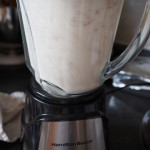 32 ounces of almond milk (or a 1/4 gallon). To make a 1/2 gallon (as most commonly sold) would require 4 cups of almonds and 8 cups of water. At the sale price of $4.99/lb, 12 oz of almonds to get 1/4 gallon of almond milk costs $3.74 and the 4 cups of almonds needed to make a 1/2 gallon would cost $7.48.
32 ounces of almond milk (or a 1/4 gallon). To make a 1/2 gallon (as most commonly sold) would require 4 cups of almonds and 8 cups of water. At the sale price of $4.99/lb, 12 oz of almonds to get 1/4 gallon of almond milk costs $3.74 and the 4 cups of almonds needed to make a 1/2 gallon would cost $7.48.
Almond Prices: If Sprouts almonds aren’t on sale (regular price $7.99/lb), then the next best price for almonds is at Costco. Costco almonds are $5.597 per pound (sold as a 3lb bag).
In Conclusion…I’m giving it up.
Given all the above, for me personally I’m going with a rogue third option. Not homemade, not store-bought, but no almond milk at all! Radical, huh? Being mindful of myself and my choices, I don’t feel like I can bear the karmic weight of either DIY or store-bought. And frankly, when I’m honest with myself – I don’t NEEEED it. I started using almond milk as a milk substitute when I noticed that cow’s milk made me very very sleepy (like nearly-passing-out sleepy). I’ve gotten in the habit of having a cup in the morning with coffee or tea, and another coffee/tea/almond milk in the afternoon for a pick me up. But really it’s just a habit. And habits can be changed.
Since I really don’t have any trouble waking up, eliminating almond milk from the morning shouldn’t be a problem. As for the p.m.? Time for me to explore better afternoon snack options like Lacy’s list of 84 Healthy Snack Ideas.
Have you made your own almond milk? What motivates you to DIY?

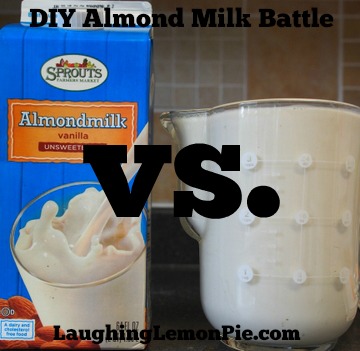
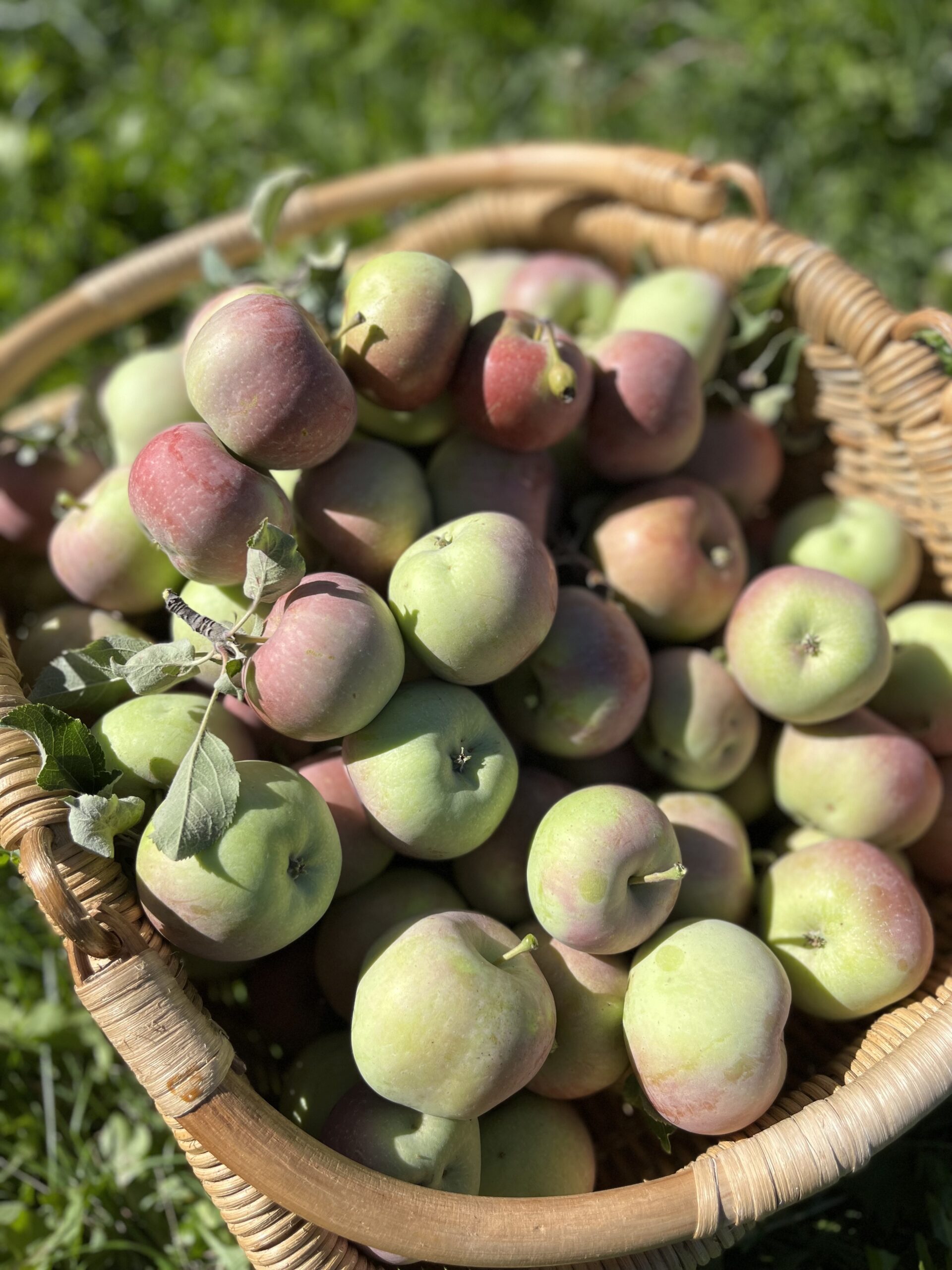
Have you tried making homemade almond milk with less almonds? I make mine with 2/3 or 3/4 cup of almonds and 4 cups of water. I find that it is still plenty creamy and flavorful for us to use as a drink and for baking, making cream sauces, etc. That would drastically decrease your cost! I keep my leftover pulp in the freezer. Once I have 3-4 batches (I make almond milk probably once a week, maybe twice sometimes) I dry it in the oven and then blend it in my spice blender to a powder. I use it in granolas, breads, and sometimes energy balls as well in place of some of the ground oats or ground nuts. It is not flavorful like ground almonds because it is basically non fat, but it is still useful!
Have you tried making homemade almond milk with less almonds? I make mine with 2/3 or 3/4 cup of almonds and 4 cups of water. I find that it is still plenty creamy and flavorful for us to use as a drink and for baking, making cream sauces, etc. That would drastically decrease your cost! I wouldn’t dream of using 2 cups of almonds with 4 cups of water. I keep my leftover pulp in the freezer. Once I have 3-4 batches (I make almond milk probably once a week, maybe twice sometimes) I dry it in the oven and then blend it in my spice blender to a powder. I use it in granolas, breads, and sometimes energy balls as well in place of some of the ground oats or ground nuts. It is not flavorful like ground almonds since it is nonfat, but it still has some nutrients, so it works!
I’m so glad you mentioned that! Yes I did try making it with less almonds – just today in fact!
A friend on FB suggested 1 cup almonds to 4 cups water. However – I found the resulting milk to be too thin. Too watery for my taste, and also much more watery than store-bought. My initial aim was to create and critique a version of almond-milk that was comparable with store-bought and could be a nearly-identical substitution. The 2 cups almonds/4 cups water fit that criteria. I could see that some people might enjoy (or could get used to) the less-almondy (and therefore more affordable) almond milk though. And definitely anyone serious about making their own almond milk on a regular basis should experiment with the ratio that tastes best for them or works best for how they drink/use it.
Your tips for using the leftover nutmeat are terrific! Thank you so much for sharing!
Mmmmm! I’ll tell you what though – the less-almond/more-watery almond milk is really really great heated up with coffee. It’s like a happy medium between an Americano and a Latte. Now I’m going to have to re-think my giving up almond milk! Thanks a lot (and I mean that both sincerely and sarcastically)!
How the heck are you getting almonds this cheap?…. almonds go for around $12 a pound for me in the midwest us
This article is about two years old — but I haven’t checked almond prices lately! Entirely possible they have gone up…
Using a vitamix blends it better so you get a thicker milk. I use 1 cup to 4.5 cups water and it is perfect.
I used my ninja with blend IQ and I found that 1:4 almonds to water and found the milk to be nice and creamy. I find raw almonds to make creamier milk and I find them at $3.99 per lb at grocery outlet. Being that price, and use using a 1:4 ratio, it is cheaper to make my own. I get 3 cups of almonds per lb.
Thanks for sharing your numbers!
I started DIY almond milk after learning how easy it is, and to avoid the additives.
I use 2 cups of almonds for every 7 cups of water with my Cuisinart blender, and I find that it is similar consistency to the store. Of course I have to shake it, and I use it within a week because I use it in recipes. I also use the leftover ground almonds for almond flour, which makes it even more affordable making my own almond milk. I just put the ground almonds onto a plate, and when I walk by it in the kitchen, I use a spoon to lift and sifted it, and it dries in 24 hours, then bag it up for future use. Many of my low carb whole food recipes call for almond flour, and another routine I’ve gotten into is making the milk on the weekend, followed by treats because they usually call for almond flour, so I use it wet. My family enjoys having cookies, cakes, and brownies from scratch on a regular basis, and I enjoy knowing what is in our food, and where it comes from.
I would suggest that the ‘karmic weight’ is substantially higher if you consume regular milk. But also, if to analyze matters in great detail using this approach, I would challenge that if you put the other things you might consume under equivalent scrutiny, lest you grow all your own food, produce your own blender technology and computers and their parts from scratch, produce your own toilet paper rolls — you would not be able to eat or do much anything at all! If to investigate how much waste and environmental damage is created via the net sum outcome of the production of all these things, then it is arguably horrific. You would end up effectively paralyzed if taken to its ultimate conclusion.
Likely the only way to truly go past this, is to significantly advance technology itself to become more homogenous with the rest of the planet (e.g. ‘growing computers’ in the fashion of a plant, rather than constructing it out of parts).
Anyhow, at least the almonds milk I’ve found in stores, they don’t to always feel a bit ‘watery’ and I like the thickness of a DIY version. On the other hand, for whatever reason, the store-bought unsweetened almond milk is unbearable, whereas a DIY version somehow obtains a natural sweetness to it. Meanwhile a sweetened almond milk often contains 2.5g of added sugar per 3 ounces of almond milk — and it still tastes weirdly synthetic!
In every case, thank you for the article and for sharing very many interesting links, in particular the Nature paper!
Hello
I was googling for content about Almond Milk When I came across your excellent resource page.
I just wanted to say that your page helped me, I would have found an excellent resource.
Here it is in case you’d like to check it out https://www.elnodiacademy.com/almond-milk/
Also, my guide might make a nice addition to your page.
Either way, thanks for putting together your list of resources. Have a great day.